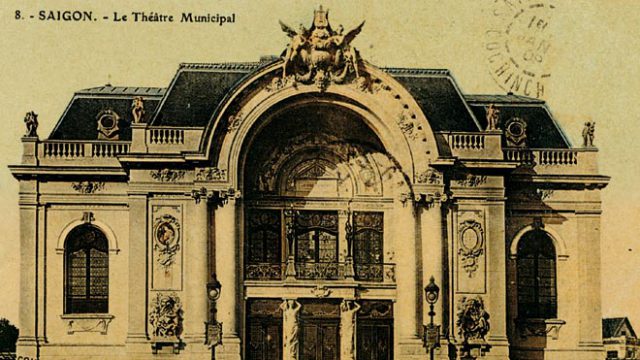France didn’t exactly cover itself in glory in the 90-odd years that it ruled Vietnam, from 1867 onwards. However, its colonial adventure did produce some intriguing and beautiful architecture, like the Municipal Theatre, also known as the Saigon Opera House, built by the architect Eugène Ferret. Opened for performances in 1900, the theatre was quite extravagant. Reflecting the architectural flamboyance of the Third Republic, and modelled on Paris’ Petit de Palais, it could accommodate 1,800 people and boasted of the latest styles in furnishings, art and décor—all imported from France. This postcard from 1909 shows the extravagant façade of the building. You can see many of the beautiful reliefs and inscriptions that were taken off in 1943 for being too ornate. During WWII, the theatre suffered damage and was restored in 1955 to function as the seat of the Lower House of the Republic of Vietnam. Following the end of the Vietnam War in 1975, the grand theatre was finally restored to its original function. Today it is the home of the Ho Chi Minh City Ballet Symphony Orchestra and Ballet.
Municipal Theatre, Ho Chi Minh City, 1909
An extravagant French legacy in Vietnam

Municipal Theatre, Ho Chi Minh City, 1909
Municipal Theatre, Ho Chi Minh City, 1909



